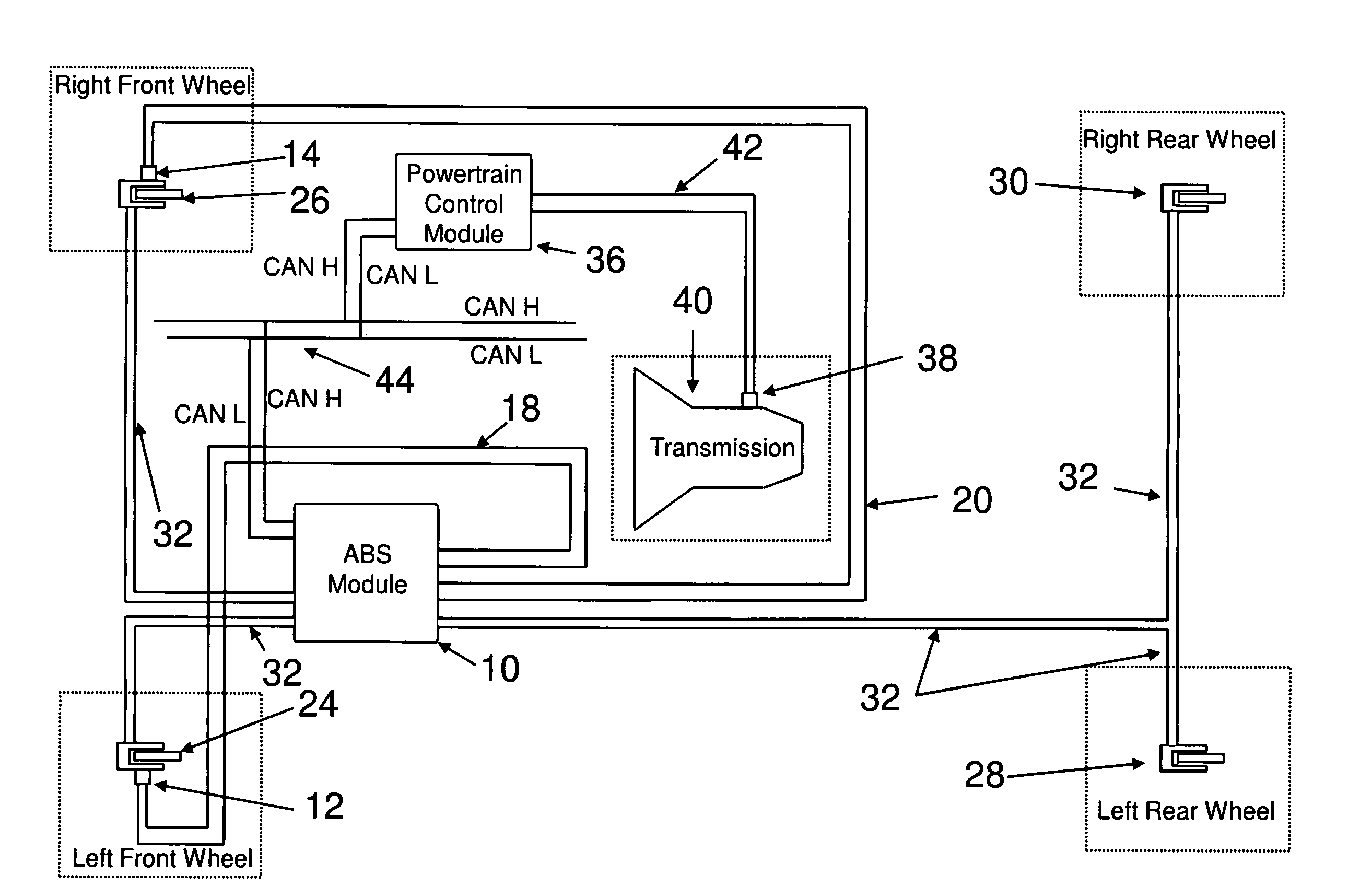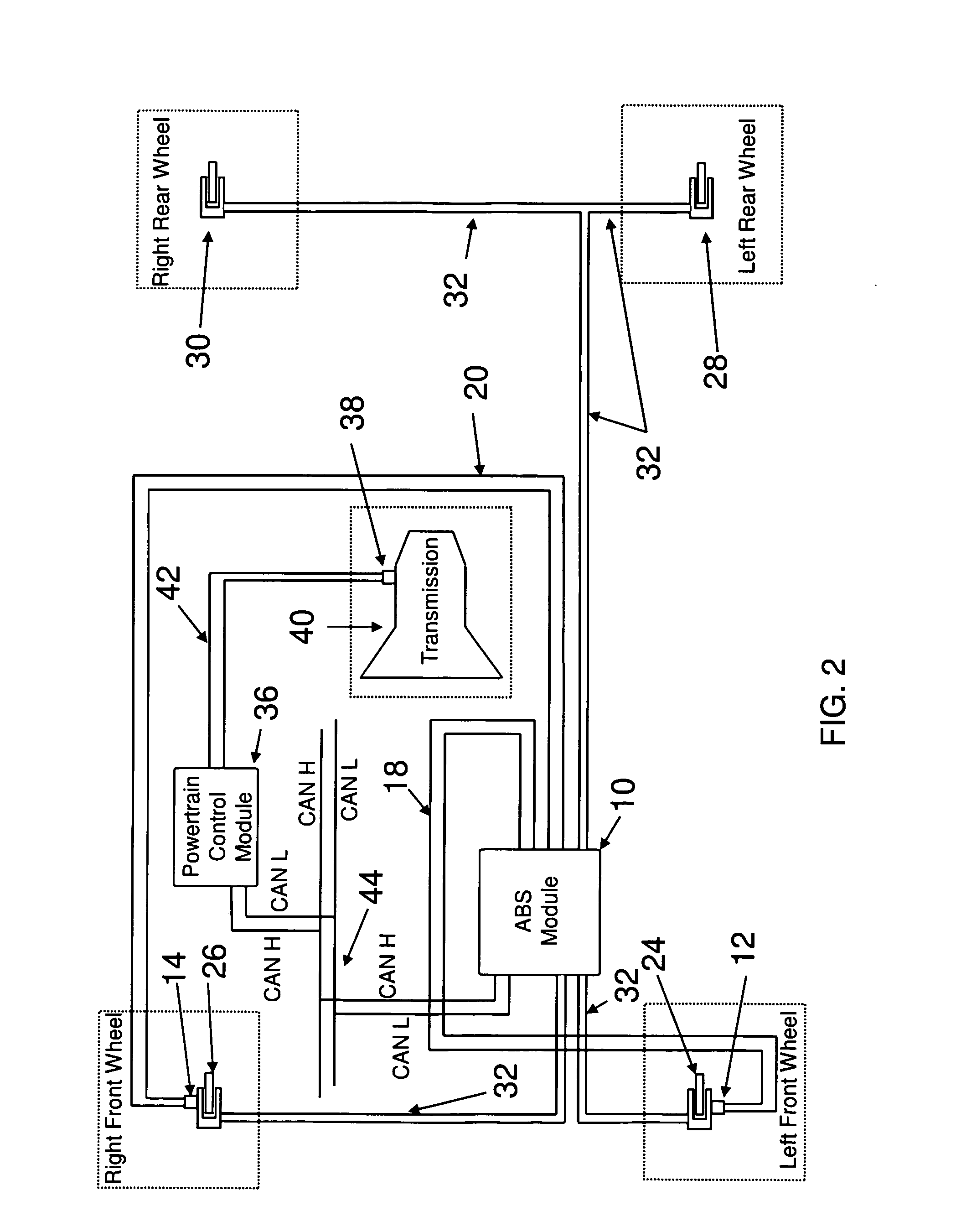Output shaft speed sensor based anti-lock braking system
a technology of output shaft speed and anti-locking system, which is applied in the direction of braking system, process and machine control, instruments, etc., can solve the problems of no mechanism for the abs to be the cause of powertrain control module (pcm) or oss sensor failur
- Summary
- Abstract
- Description
- Claims
- Application Information
AI Technical Summary
Benefits of technology
Problems solved by technology
Method used
Image
Examples
Embodiment Construction
[0012]The inventors use the output shaft speed (OSS) signal, in lieu of the differential speed sensor (DSS) signal, to determine the rear wheel speeds, hence eliminating the need for the DSS. The OSS signal conventionally is calculated and used internally by the vehicle PCM (Powertrain Control Module). The inventors modified the CAN message list to allow this signal to also be sent to the ABS module by the PCM. This raw signal is filtered and then used by the ABS module for the rear wheel speeds. The invention makes use of this OSS signal / sensor instead of a dedicated rear wheel speed sensor such as the DSS, and allows for the elimination of the cost / assembly / wiring / components of the DSS.
[0013]Such a modified OSS signal / sensor enhances ABS reliability over the conventional ABS system that relies on the DSS to provide rear wheel speed information. Indeed, only the loss of the CAN bus leads to the loss of ABS. There is no longer loss of the ABS due to failure with the DSS. Further, th...
PUM
 Login to View More
Login to View More Abstract
Description
Claims
Application Information
 Login to View More
Login to View More - R&D
- Intellectual Property
- Life Sciences
- Materials
- Tech Scout
- Unparalleled Data Quality
- Higher Quality Content
- 60% Fewer Hallucinations
Browse by: Latest US Patents, China's latest patents, Technical Efficacy Thesaurus, Application Domain, Technology Topic, Popular Technical Reports.
© 2025 PatSnap. All rights reserved.Legal|Privacy policy|Modern Slavery Act Transparency Statement|Sitemap|About US| Contact US: help@patsnap.com



